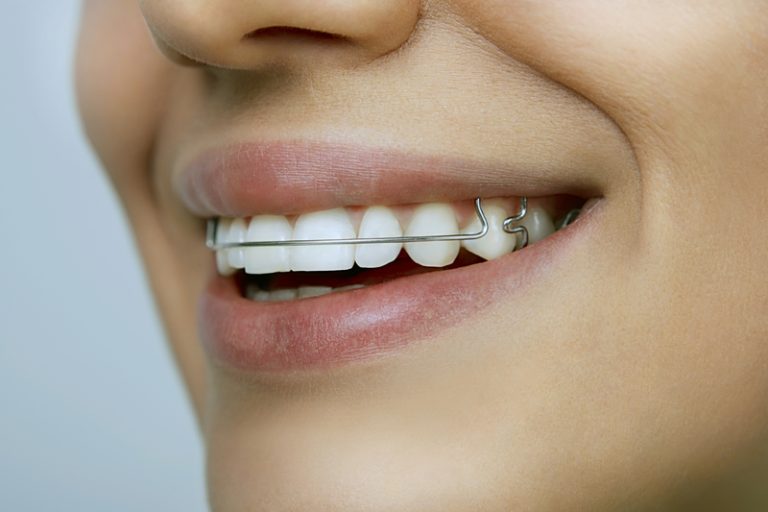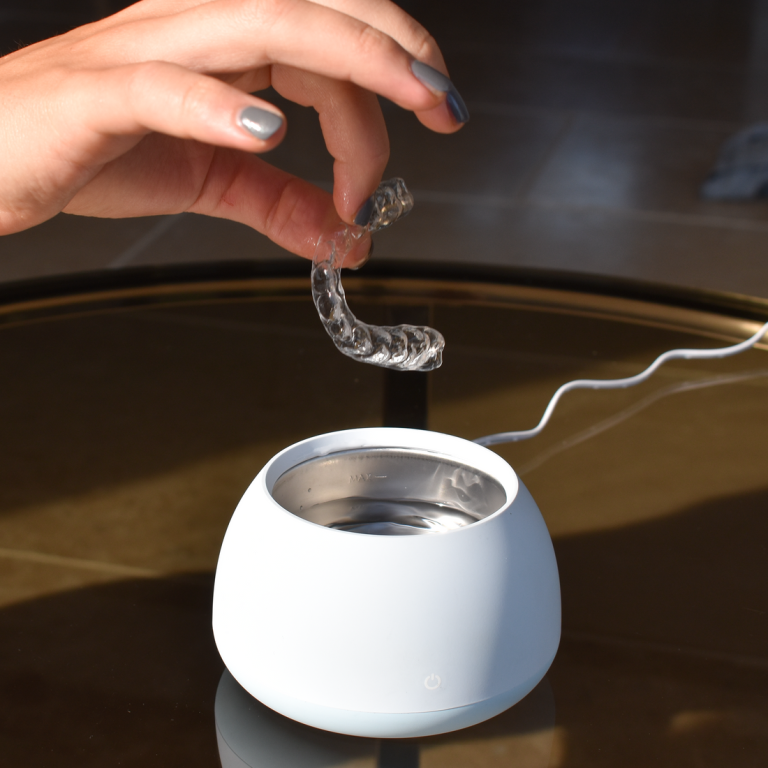Retainers Definition: Comprehensive Guide to Dental Appliances
Last Updated on 2 months by DR. ALBIN SIPES
Retainers are dental devices used to maintain teeth alignment. They play a key role after braces.
Understanding retainers is crucial for anyone who has had orthodontic treatment. These devices help keep teeth in their new positions. Without them, teeth might shift back. Retainers come in different types, including fixed and removable options. They are custom-made to fit each person’s mouth.
Wearing a retainer as prescribed ensures the best results. In this blog, we will explore what retainers are, their types, and their importance. This information will help you understand how retainers work and why they are necessary. Let’s dive into the world of retainers and see how they contribute to a perfect smile.
Introduction To Retainers
Retainers are essential in orthodontics. They help keep teeth in place after braces. Many people need retainers for a long time. This helps maintain their new smile. Let’s explore the purpose, importance, and types of retainers.
Purpose And Importance
The main purpose of retainers is to keep teeth in their new position. After braces, teeth can shift back. Retainers prevent this from happening. They are crucial for maintaining your new smile.
Retainers also help with bone reshaping. After braces, the bones around your teeth need time to settle. Wearing a retainer helps this process. It ensures your teeth stay straight and healthy.
Retainers are important for long-term dental health. They help avoid future dental problems. Regular use of retainers can save you from needing braces again. This makes them a vital part of orthodontic treatment.
Types Of Retainers
| Type | Description |
|---|---|
| Fixed Retainers | These are attached to the back of teeth. They are not removable. Fixed retainers are usually made of a thin wire. They provide continuous support. |
| Removable Retainers | These can be taken out for eating and cleaning. There are two main types: Hawley and Clear Plastic. |
- Hawley Retainers: Made of acrylic and metal wire. Adjustable and durable.
- Clear Plastic Retainers: Made of clear plastic. Less noticeable but can wear out faster.
Each type of retainer has its benefits. Fixed retainers offer constant support. Removable retainers offer flexibility. Your orthodontist will help you choose the best one for you.
:max_bytes(150000):strip_icc()/Retainer-Fee-Final-edit-abf7e33e31e541029f3f94b73eaae216.jpg)
Fixed Retainers
Fixed retainers are a popular choice for keeping teeth in place. They are often recommended after orthodontic treatment. These retainers are attached to the back of your teeth. This makes them less visible and more durable. Let’s explore how they work, their pros, and cons.
How They Work
Fixed retainers consist of a thin wire. This wire is bonded to the back of your teeth. Dentists use a special adhesive for this process. The wire spans across several teeth, usually from canine to canine. This helps to keep the teeth in their new position.
Fixed retainers are designed to be permanent. They are not removable by the patient. The wire is strong but flexible. It allows for minor movements while maintaining alignment.
Pros And Cons
| Pros | Cons |
|---|---|
|
|
Fixed retainers offer many benefits. They are especially useful for maintaining straight teeth. But, they also have some downsides. Regular dental check-ups are necessary. This ensures the retainer stays in good condition.
Removable Retainers
Removable retainers are dental devices used after braces. They help keep your teeth in place. You can take them out and put them back in easily.
Design And Function
Removable retainers come in two main designs: Hawley and Essix.
- Hawley Retainers: Made of metal wires and acrylic. The wires hold the teeth. The acrylic fits snugly against the roof of the mouth.
- Essix Retainers: Clear plastic retainers. They look like Invisalign aligners. Essix retainers cover the entire arch of teeth.
Both designs help maintain your new smile. They prevent teeth from shifting back to their old positions.
Advantages And Disadvantages
| Advantages | Disadvantages |
|---|---|
|
|

Materials Used In Retainers
Retainers are essential devices for maintaining teeth alignment after braces. The materials used in retainers play a significant role in their functionality and comfort. Understanding these materials helps in choosing the right retainer for your needs.
Common Materials
Retainers are made from different materials. The most common ones include:
- Acrylic: This is a popular choice for retainers. It is lightweight and customizable. Dentists can adjust it for a perfect fit.
- Plastic: Transparent plastic is used in clear retainers like Invisalign. They are nearly invisible and preferred for aesthetics.
- Metal: Metals like stainless steel are durable. They are often used in traditional wire retainers.
Durability And Comfort
The durability and comfort of retainers depend on their material.
- Acrylic Retainers: These are sturdy and long-lasting. They provide a snug fit, ensuring comfort over time.
- Plastic Retainers: These are comfortable and less noticeable. They are not as durable as acrylic but offer better aesthetics.
- Metal Retainers: Extremely durable and effective. They might be less comfortable and more visible than other types.
Choosing the right material depends on your needs and preferences. Consult your dentist for the best option for your dental health.
Custom Vs. Standard Retainers
When it comes to dental retainers, you have two main options: custom retainers and standard retainers. Understanding the differences between these types can help you make an informed choice. Both have unique advantages and serve different purposes in maintaining your smile.
Customization Process
Custom retainers are tailored specifically for your teeth. The process starts with your dentist taking an impression of your teeth. This mold is then used to create a retainer that fits your mouth perfectly. Custom retainers offer a snug fit and are more comfortable to wear. They also help in maintaining precise teeth alignment.
On the other hand, standard retainers are pre-made and come in limited sizes. These retainers may not fit as well as custom ones. They can be less comfortable and less effective in maintaining teeth alignment. However, they are usually more affordable and quicker to get.
Which Is Better?
| Factor | Custom Retainers | Standard Retainers |
|---|---|---|
| Fit | Perfect fit | Limited sizes |
| Comfort | High | Moderate |
| Effectiveness | Very effective | Less effective |
| Cost | Higher | Lower |
| Time to get | Longer | Shorter |
Deciding between custom and standard retainers depends on your specific needs. If you prioritize comfort and effectiveness, a custom retainer is the better choice. If cost and quick availability are more important, a standard retainer might be suitable. Always consult with your dentist to determine the best option for your dental health.

Maintenance And Care
Proper maintenance and care of your retainer ensure its longevity and effectiveness. Regular cleaning, correct storage, and mindful handling are key. In this section, we will explore the best practices for keeping your retainer in top condition.
Cleaning Techniques
Cleaning your retainer daily is essential to maintain oral hygiene. Follow these steps for best results:
- Rinse with Lukewarm Water: Immediately rinse your retainer with lukewarm water after removing it from your mouth. This prevents plaque buildup.
- Brush Gently: Use a soft-bristled toothbrush to gently scrub the retainer. Avoid using toothpaste as it can be abrasive.
- Soak in a Cleaning Solution: Once a week, soak your retainer in a denture or retainer cleaning solution. This helps to disinfect and remove any lingering bacteria.
- Avoid Harsh Chemicals: Do not use bleach or alcohol-based cleaners, as they can damage the retainer material.
Storage Tips
Proper storage of your retainer is crucial to avoid damage and loss. Here are some tips:
- Use a Protective Case: Always store your retainer in a hard, ventilated case when not in use. This protects it from physical damage and contamination.
- Keep Away from Heat: Avoid exposing your retainer to heat sources, such as direct sunlight or hot water. Heat can warp the retainer.
- Don’t Wrap in Napkins: Never wrap your retainer in napkins or tissues. This common practice often leads to accidental disposal.
- Store in a Safe Place: Keep the retainer case in a consistent, safe location. This minimizes the risk of losing it.
By following these cleaning techniques and storage tips, you can ensure your retainer remains in excellent condition, providing you with the best results for your oral health.
Cost And Insurance
Understanding the cost and insurance coverage for retainers is important. This helps you budget and plan for dental expenses. Let’s delve into the average costs and what insurance might cover.
Average Costs
The cost of retainers varies. It depends on the type of retainer and the dentist’s location. Here is a rough estimate of the average costs:
| Type of Retainer | Average Cost |
|---|---|
| Hawley Retainers | $150 – $300 per arch |
| Clear Retainers | $400 – $800 per set |
| Permanent Retainers | $250 – $500 per arch |
These costs can add up. It’s useful to check with your dentist for exact pricing.
Insurance Coverage
Insurance coverage for retainers varies. Some plans cover part of the cost, while others may not. Here are some key points to consider:
- Check if your dental insurance includes orthodontic coverage.
- Some plans cover only a percentage of the cost.
- Contact your insurance provider for specific details.
Understanding your insurance policy can save you money. Always ask your provider about specific coverage details.
Common Issues And Solutions
Wearing a retainer is essential for maintaining your smile after orthodontic treatment. Yet, it can come with its own set of issues. Let’s explore some common problems and their solutions.
Adjustments And Repairs
Retainers may need adjustments over time. They can become loose or uncomfortable. Minor adjustments can often solve these problems. Here are some common issues and simple fixes:
- Loose Retainer: If your retainer feels loose, it may need a small adjustment. Try gently pressing it into place. If it still feels loose, visit your orthodontist.
- Broken Wire: If a wire on your retainer breaks, do not attempt to fix it yourself. This requires professional repair. Contact your orthodontist right away.
- Worn Out: Over time, retainers can wear out. If you notice cracks or if it feels different, you may need a replacement. Schedule an appointment with your orthodontist.
When To Seek Professional Help
Some issues with retainers need professional attention. Here are some signs you should see your orthodontist:
- Persistent Discomfort: If your retainer causes ongoing pain, it may need adjustment.
- Visible Damage: Cracks or breaks should be examined by a professional.
- Fit Problems: If your retainer no longer fits well, it may need resizing.
A retainer is a vital part of maintaining your orthodontic results. Addressing common issues promptly ensures your smile stays perfect.
Conclusion
Understanding retainers is crucial for dental health. They help maintain teeth alignment. Regular use ensures long-lasting results. Clean your retainer daily to avoid bacteria build-up. Consult your dentist for personalized advice. A well-maintained retainer can prevent costly dental issues. Stay committed to your dental routine.
Your smile will thank you.



